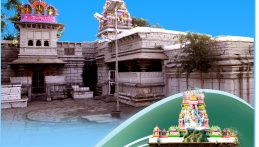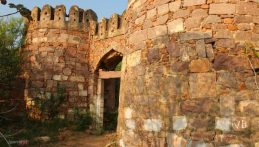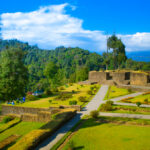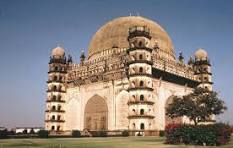Now Reading: Top 5 Best Places Visiting in Yadgir – Forts, Temples & Natural Wonders
-
01
Top 5 Best Places Visiting in Yadgir – Forts, Temples & Natural Wonders

Top 5 Best Places Visiting in Yadgir – Forts, Temples & Natural Wonders
1.Gogi

From Shahapur town Gogi reaches at a distance of 12 kilometers to present its noteworthy historical and cultural heritage. The Chanda Hussaini Dargah makes Gogi town famous while showcasing many centuries of history that reveal the past dynastic splendor and elegant architectural masterpieces.
Gogi achieved fame under Adil Shahi rule as the construction of Gogi Mahal demonstrated its spectacular palace. In 1551 Mir Taj-ud-din constructed this grand architectural wonder which displays the design perfection from that historical period. The palace, though aged, still echoes the stories of its glorious past.
During the time of the Adil Shahi dynasty Gogi earned its reputation through the impressive Gogi Mahal which graced the town. The structure showcases the architectural mastery of that time when Mir Taj-ud-din built it in 1551. The palace, though aged, still echoes the stories of its glorious past.
History
- The Chanda Hussaini Dargah stands as a prominent historic feature within the area of Gogi. Evident on its front door the structure shows a foundation date of 1604 according to Mutavali Shaikh Miyan. Both pilgrims and interested visitors choose to visit this revered site because of its exquisite craftsmanship and seek blessings at this place.
2.Siddalingeshwar Temple

Siddalingeshwar Temple represents the greatness of ancient Indian temple architecture because it displays the distinctive Panchakuta style. Devotees alongside history enthusiasts ought to visit this temple because its intricate design and spiritual significance and artistic grandeur unite to create a must-visit attraction.
The main aspect of Siddalingeshwar Temple consists of Panchakuta organization which unifies five sanctuaries together. The temple consists of four separate individual sanctums (garbhagruhas) which rest in cardinal directions across the building. The temple architects demonstrated their ancient spiritual understanding through this particular architectural design plan.
Cultural Significance
- Worshipers hold the Siddalingeshwar Temple as both a remarkable spiritual site and an important religious center. People come from all walks of life to this site both to receive divine blessings and soak in the holy environment. The temple stands as an essential cultural center for the region since numerous religious events spread across twelve months take place at this site.
3.Taylor Manzil

A historic structure named Taylor Manzil exists within the heart of India where it attracts the interest of both historians and architects and visitors across many generations. In 1840 British officer Philip Meadows Taylor constructed Taylor Manzil which stands today as an exceptional result of colonial architecture techniques fused with innovative building methods.
Philip Meadows Taylor succeeded in British military service while simultaneously dedicating himself as an author and administrator who loved studying Indian culture and architecture. His time in India led him to build Taylor Manzil which remains a curious attraction because of its extraordinary design elements.
4.Yevur

Yevur stands 32 km from Surapur as a town whose historical and cultural value remains rich until today. Multiple inscriptions numbering 22 were discovered during the 11th and 12th centuries at this location which belonged to the Kalyana Chalukya rulers together with two inscriptions originating from the Kalachuris. During that period Yevur gained recognition as an important educational facility along with being a religious and cultural hub.
5.Wagangera fort

Wagangera Fort stands on the Shorapur hill range where it acted as a major administrative center before the arrival of Nizams. Under Nizam rule the government establishment relocated from Surpur to become the new administrative center. A large hill stands next to a hillock in the present-day Wagangera village. The main fort exists on the hill while stone walls on the neighboring hillock indicate its use as an observation point.
A mantapa stands before the main gateway of the fort when viewing it from the taller hill position. The king used the mantapa as a site to monitor the lakes below from his perspective. The Surapur Nayakas built the site during A.D. 1806 as it stands about 24 km southwest of Shahapur.
Vanadurga was the original name of this fort which merged “Vana” (forest) and “Durga” (fort) unconsciously for its historical buzzing forest landscape. Agricultural land now occupies this location because all forested areas disappeared from this region. The fort rests in the Vanadurga village inside Yadgiri District Shahpur Taluk.
Related articles :Top 5 Best Places Visiting in Vijayapura – Monuments, Forts & Historical Sites
Stay Informed With the Latest & Most Important News
Previous Post
Next Post
-
 01Top 5 Best Places Visiting in Gyalshing – Monasteries, Lakes & Scenic Escapes
01Top 5 Best Places Visiting in Gyalshing – Monasteries, Lakes & Scenic Escapes -
 02Top 5 Best Places Visiting in Panna – Temples, Waterfalls & Wildlife Escapes
02Top 5 Best Places Visiting in Panna – Temples, Waterfalls & Wildlife Escapes -
 03Top 2 Best Places Visiting in Chitradurga for History, Nature & Adventure
03Top 2 Best Places Visiting in Chitradurga for History, Nature & Adventure -
 04Top 5 Best Places to Visit in Malerkotla – Malerkotla Fort, Sheesh Mahal & More
04Top 5 Best Places to Visit in Malerkotla – Malerkotla Fort, Sheesh Mahal & More -
 05Top 10 Best Places Visiting in Dakshina Kannad for Culture, Nature & Coastal Charm
05Top 10 Best Places Visiting in Dakshina Kannad for Culture, Nature & Coastal Charm -
 06Best Places Visiting in Shopian – Explore Top Attractions & Hidden Gems
06Best Places Visiting in Shopian – Explore Top Attractions & Hidden Gems -
 07Top 10 Best Places to Visit in Sindhudurg for Beaches, Forts & Nature
07Top 10 Best Places to Visit in Sindhudurg for Beaches, Forts & Nature














Pingback: Top 10 Best Places Visiting in Alappuzha – Backwaters, Beaches & Cultural Gems